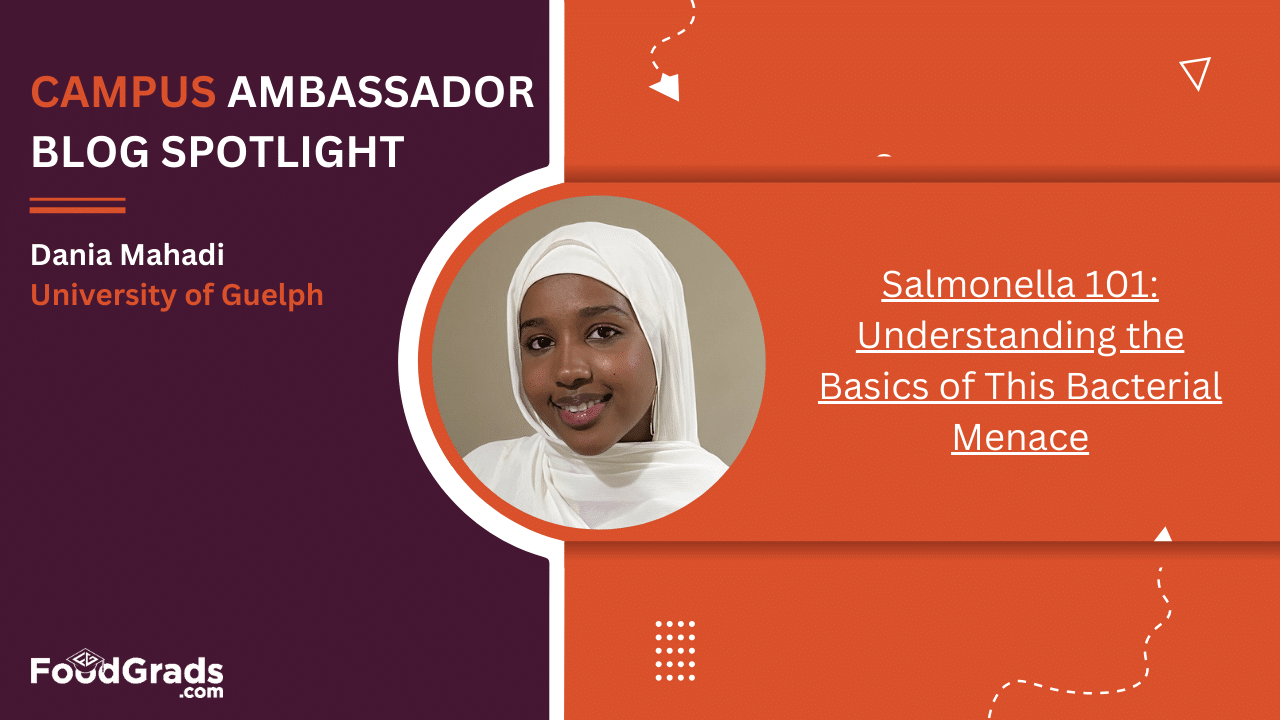Salmonella 101: Understanding the Basics of This Bacterial Menace
Last Updated on July 28, 2024
According to Centers for Disease and Control Prevention (CDC) it is estimated that one in every 25 packaged grocery store chickens contains Salmonella bacteria. This statistic serves as a reminder of the persistent hurdles faced in upholding food safety standazrds within the poultry supply chain.
Now, let’s unravel the intricate web of measures implemented in the poultry industry to protect consumers (and our feathered friends of course) from the notorious Salmonella threat!
Salmonella is a type of bacteria that can cause food poisoning and poses a significant hazard to food safety in the food processing industry. Its presence can contaminate poultry processing facilities, leading to devastating foodborne illness outbreaks.
Combating Salmonella contamination and implementing effective prevention control are essential for safeguarding our food supply. Let’s explore strategies currently in use to ensure a safer environment in the poultry industry!What is Salmonella?
Sources of contamination
Samonella, an uninvited intruder can often find its way onto our plate making us sick. The prime suspects for Salmonella contamination are poultry and raw eggs that are not cooked thoroughly.
Salmonella originates from the intestinal tracts of animals, mainly mammals and birds, and may contaminate their meat or eggs during butchering or the laying process. When it comes to poultry, Salmonella often resides in the digestive systems of birds. If the carcass isn’t handled meticulously, the bacteria could find its way onto the meat. Cross-contamination, whether between different cuts of poultry or with other surfaces in the processing facility, can contribute to the spread!
Raw eggs, particularly their shells, can harbour Salmonella. The bacteria may present on the outer shell surface, or in certain cases, can penetrate through the pores of the shell if the egg contacts contaminated surfaces.
Fun Fact: Occasionally, Salmonella can be found in the ovaries of laying hens, leading to egg contamination before even the shell is formed!
But wait! Fresh produce isn’t as innocent as it seems. Fresh fruits and vegetables tend to harbor Salmonella when they encounter soil or contaminated water during their cultivation, harvesting, or processing. Take lettuce, for instance, cultivated in warm and humid conditions, which provides a perfect breeding ground for bacteria. During harvesting, the irrigated water used could contaminate the lettuce with Salmonella. This highlights the need for clean water in agriculture to minimize the risk of contamination.
Significance of Salmonella on public health
Salmonella affects public health when widespread outbreaks of foodborne illnesses occur. Salmonellosis is a common illness caused by a Salmonella infection, which can lead to symptoms such as diarrhea, fever, and abdominal cramps. Although most cases resolve on their own, severe infections may arise, particularly in the elderly, infants, and those with compromised immune systems. In case of persistent or severe symptoms, medical attention should be sought.
These outbreaks not only impose a substantial burden on healthcare systems but have broader consequences, leading to challenges in maintaining public confidence in the safety of the food supply chain as well as increased economic losses for the food industry. Practicing proper food handling and hygiene is crucial to minimize the risk of Salmonella contamination.
Preventive measures in poultry farms
In poultry farming, effective preventive measures are employed to combat Salmonella contamination. Polymerase Chain Reaction (PCR) is a crucial tool used to ensure proper, rigorous sanitation to mitigate the risk of external contamination. This testing method involves collecting swab samples from various sources, including the birds’ environment and feces. PCR allows for the accurate and rapid detection of traces of Salmonella DNA, enabling the prompt identification and isolation of potentially infected birds.
The prevention of Salmonella in chickens heavily relies on the use of vaccines. Certain vaccines are designed to stimulate the chickens’ immune system, inducing the production of specific defences against various strains of Salmonella, reducing the likelihood of bacterial colonization in the chickens, and minimizing the risk of transmission to both consumers and poultry products.
Safe handling practices
Now, with all this information, how can you safely ensure you’re handling poultry and eggs to reduce the risk of Samonella? There are many ways to protect yourself!
Firstly, it is imperative to start with thorough hand washing using soap and water before and after handling raw poultry, eggs or any potentially contaminated food. In order to prevent cross-contamination, it is essential to separate utensils and cutting boards when handling poultry, raw eggs, and other foods.
Secondly, cooking raw meats, particularly poultry and eggs, adequately to a sufficient internal temperature is essential to eliminate bacteria. After cooking such foods, prompt refrigeration, ideally within two hours, effectively inhibits bacterial growth. In addition, reducing the risk involves avoiding the consumption of inadequately cooked chicken and eggs. The optimal internal temperature for cooked chicken is 165F (74°C), effectively destroying Salmonella and other potential pathogens reducing the risk of foodborne illnesses. It is also important to maintain the overall cleanliness of food processing surfaces and environments and regularly clean kitchen utensils and surfaces.
By being aware of these practices and consistently implementing them, we can ensure food safety and reduce the likelihood of Salmonella-related infections!
Challenges and Future Directions
The emergence of antibiotic-resistant strains is a major challenge in Salmonella research. As these strains become resistant to commonly used antibiotics, the effectiveness of traditional treatment methods decreases, making it more difficult to control and manage Salmonella infections. This poses a significant public health concern, highlighting the urgent need for incentive strategies such as vaccine development and alternative treatment methods to combat the evolving antibiotic resistance of Salmonella.
Future directions in Salmonella research include strengthening surveillance through genomics, developing vaccines, improving food safety regulations, and promoting greater public awareness and education for Salmonella prevention!

About the Author: Dania Mahadi is a third year Food Science student at the University of Guelph. Her immense love for food and chemistry led her to aspire to pursue a career in food science, striving to make a significant impact in the industry!


leave your comment